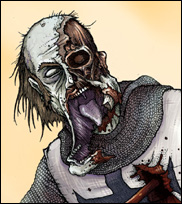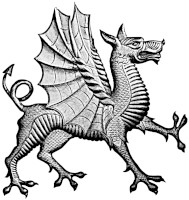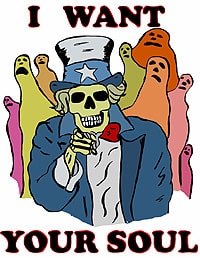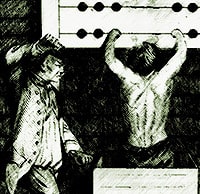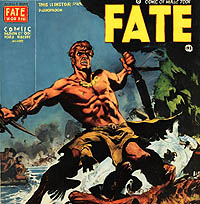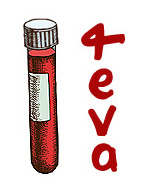Jesse Stuart Foundation, Ashland, Kentucky, 2004, 177 pages large print edition.
Allen W. Eckert is an expert on the geography, wild life and personalities of the Old Northwest Territories. Blue Jacket is a factual novel, with each chapter dated, containing no invented characters, and only being fictional in that the author constructed possible conversations between actors such as Blue Jacket and Tecumseh. The author uses the term White people extensively in places and times when it was not common. This is an anachronistic convention that either he or the editor must take in order to funnel these stories through the prism of the late 19th Century Plains Indian experience, which is the filter lens that all earlier lives must be seen through by the forever childish American Mind.
The author, generally has tribesmen discussing the enemy call them what they called them, Long Knives, or Shemanese. Another very interesting aspect about Eckert’s use of terminology, is that while Shawnees called the American enemy Longknives when talking about them, when addressing low level Americans directly, they called them white man, even though there appeared to be no racial difference between the warring peoples. This, of course, cannot be believed, but will be illuminated as I summarize this brilliant novel well suited for reading by boys.
Note that the term white appears very little in period documents and is only used in the founding documents of the American nation to designated the type of man that will be forced to fight against the Home Country and the Indians for his betters. These white men would never have been called long knives, for they did not possess long knives, which are swords. The people possessing swords, the existential enemies of the tribes, were the officer class, the master class, the money bags and aristocrats. White men were their conscripts, their slave soldiers. To the Indian, to be white was to be a slave, a belief that persists across the Old West, to include a speech given by Big Eagle of the Santee Lakota, who looked to be half Anglo or French. This sentiment is well attested in the writings of Alexander Eastman.
Step by step I will go through the life of Blue Jacket, who post modern people insist was a copper-skinned Plains Indian, as illuminated by Eckert in this novel, which is guilty of only one real omission. It is made to seem that Blue Jacket was the only adopted European American to rise to prominence in the tribes. The late 1800s fictional narrative that we labor under now was already closing in with the teeth of the great lie of omission as Eckert did his work. In 2004 this novel was unable to get a major publisher.
Wednesday, June 5, 1771
16 year old Duke’s father was away. His older brothers, no two of whom could beat him in a fight, and who regularly ganged up on him and beat him for his Indian ways, like wearing moccasins and hunting with a bow, are fixing to murder their brother while their father is away. Duke’s younger brother Charley warns Duke and they escape. They are captured by Shawnee warriors and Charley is released unharmed on the condition that Duke join the tribe, for his qualities are desired. Duke had been educated in Indian lore by an old Indian trader named Chaqui, which meant Mink. His Christian name was Jacob.
The author pretends that there was a huge language barrier between the tribes and the Americans, when there was not, as English, as he points out later, was the birth tongue of many an adopted Indian. This becomes clear towards the end of the book. I think Eckert was avoiding ridicule by the Academy who deny that tribes were mixed race against all evidence. It was common for Duke to be beaten by his father as well as brothers. This interior family brutality, codified in the Old Testament as a sacred parental duty, caused many a son to flee his father throughout American history. To not beat, whip, cane and flog a son was regarded by the Anglo and German cultures foundational to America, as a shirking of civic duty.
Duke could be identified by a small white scar like an inverted V over his right eye, which was the result of Charley accidentally hitting him with a thrown stone.
…
Sunday June 16, 1771
Duke is named Blue Jacket and taken to the town of the preeminent war chief for adoption into the leading war family, all of the warriors of which Pucksinwah, his literate sons Chiksika and Tecumseh will die fighting the Americans. He is made to run a gauntlet of hundreds of children, women and men who will beat him in the back with sticks. One of the men tries to kill him with a heavy blow to the back of the neck. After he survives, and is nursed back to health, he is adopted and is considered Shawnee flesh and blood, to have been reborn as a crusader against his own race.
Of interest is the fact that the tribal gauntlet was not indigenous to North America, but was adopted from Swedish and English military practices. We will see later that some of these Shawnee Chiefs call themselves and are called, Captain. It is quite clear that Pucksinwah wanted a brother for his eldest son, a peer of high physical ability and mental strength. It is absolutely clear that the Shawnee saw race not as genetic but as an expression of an honorable lifeway faith.
Saturday, June 5, 1773
Blue Jacket is initiated into the Shawnee faith, which is obviously heavily influenced by Christian missionary work. Moneto is the Creator. The Great Spirit or Master of Life is subordinate to the Creator, is a conflation of Jesus Christ and Mother Mary and the Norse norns or weaving Fates, and will come down from Heaven in the end times to save the faithful and punish the evil doers that afflict them, just like in Revelations. The big difference was that the Shawnee faith was an in-group, race-based faith, not a cult of universal salvation. This tribal view and the holding of Saturday sacred suggests an Old Testament influence.
The worst thing a woman can do is gossip.
Men can be beaten or executed for violations of honor code, but they must submit to this punishment. One has the option to not submit and be exiled from the people. The tribe is separated into 5 clans or septs. Blue Jacket was inducted into the war sept.
Wednesday, Match 16, 1774
Chief Logan of the Cayuga, known as a peace maker between tribes and “whites” is obviously mixed race, and is described as tall and angular. Pucksinwah describes to Logan how border land “whites” had been disguising themselves as Indians and killing other “whites” in order to start a war.
Think, there is no way an Apache or an Eskimo, a Navaho or Tinglit could disguise themselves as whites, nor could “white” Americans disguise themselves as someone with absolutely alien racial features. Over and over, though Eckert denies it, it is obvious in his account that “whites” and “Indians” could not be told apart other than by their attire. The language factor will be discussed in the second half of the summation.
If, so called “whites” could simply dress up like Indians and be taken for Indians, than that suggests that significant numbers of Indians were in fact adopted European Americans.
The Shawnee faith even had a Satan, Matchemenetoo, the Bad Spirit, who “blinds” men’s minds, and acts as a deceiver.




